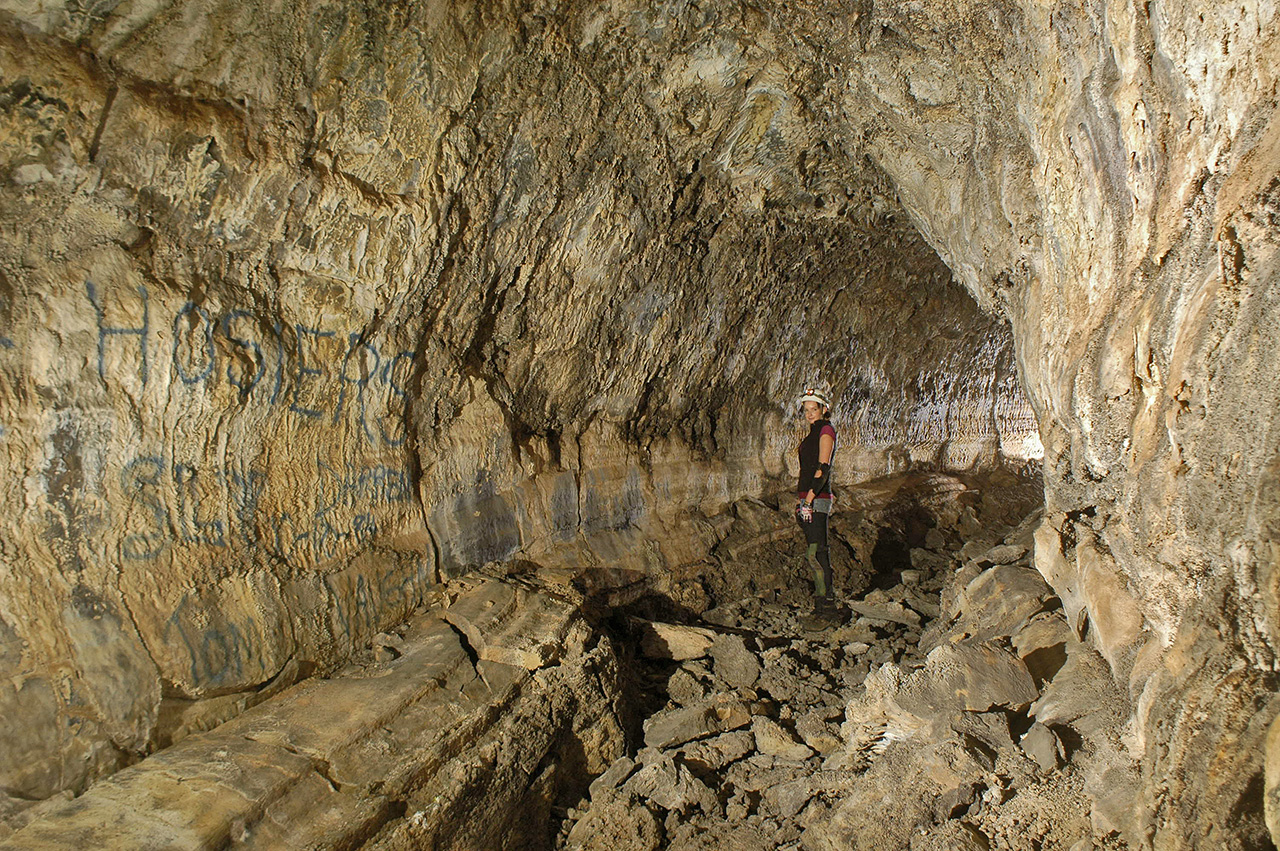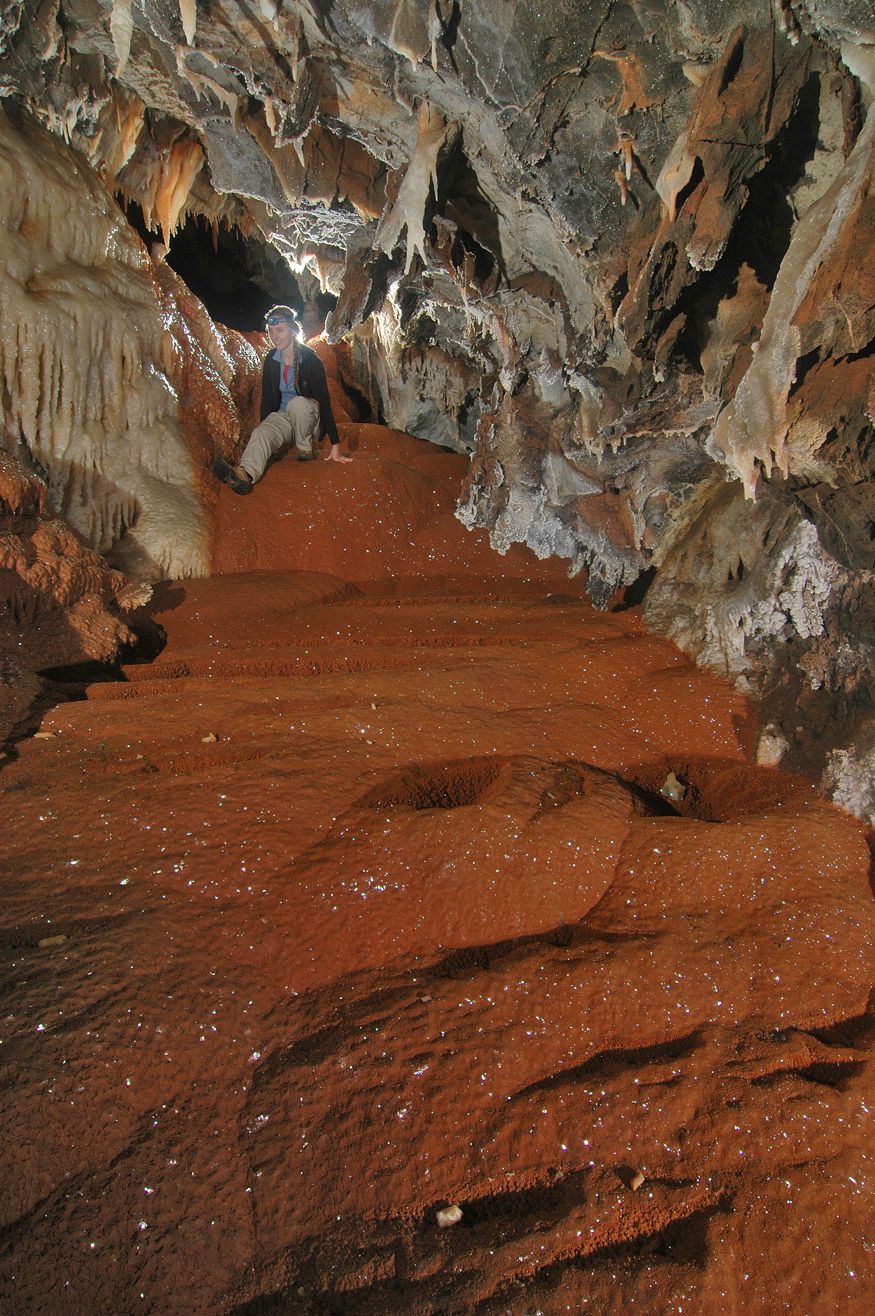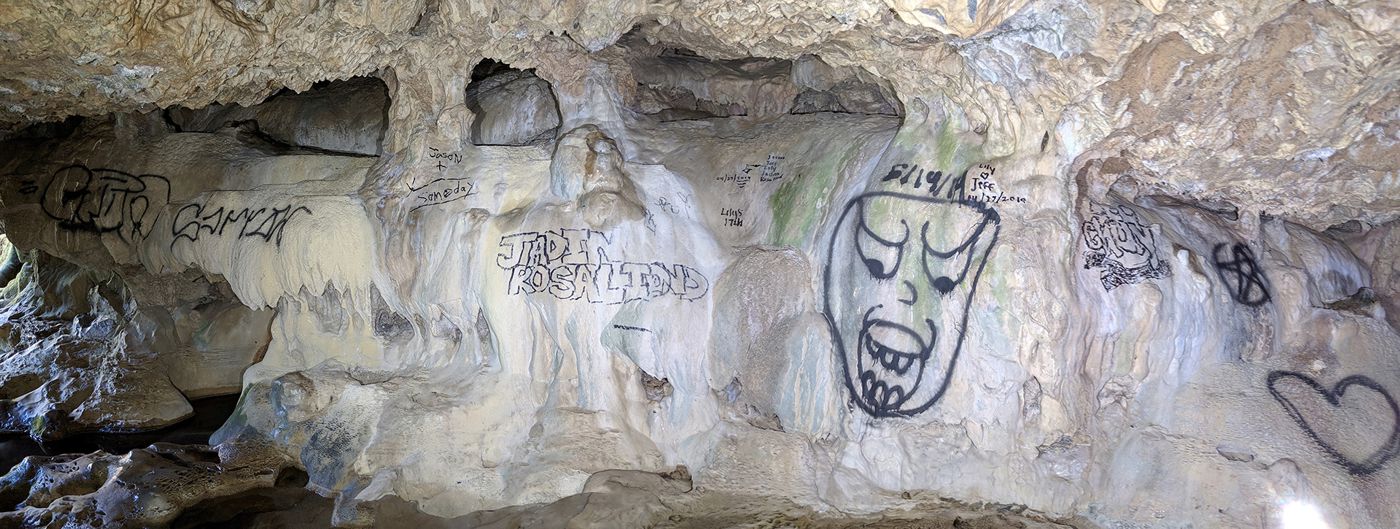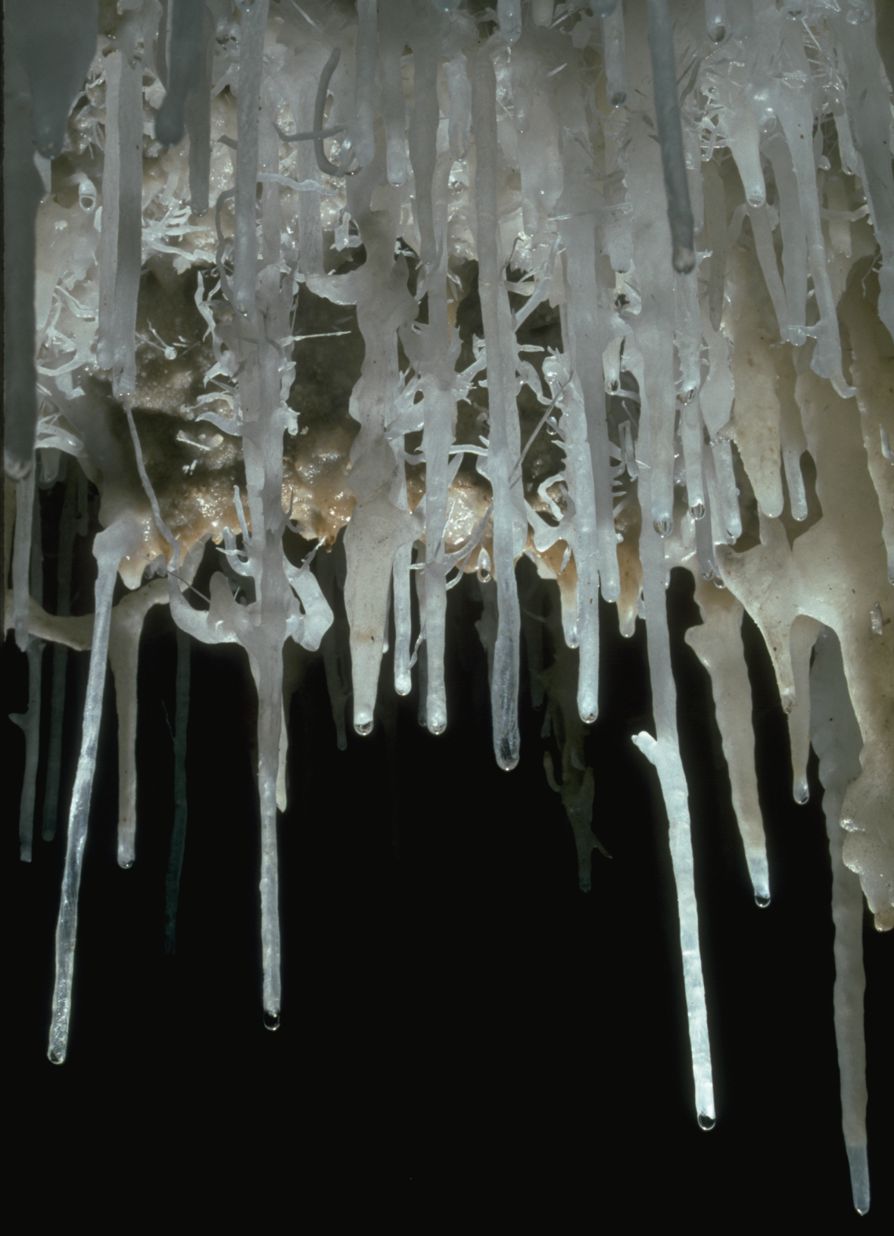
Protecting the Caves of the Golden State
Everyone that visits caves in California is responsible for protecting these natural wonders.
Fragility
Caves vary in California. Tour caves have paved trails and handrails. Some alpine caves in the high country are mostly rock and sand and are very tolerant of human travel. Other caves are completely different and are very fragile. Fragility can come from many things. There might be delicate minerals that are impossible to avoid, a roost of rare bats that should not be disturbed or ancient bones that would turn to dust if stepped on.
Vandalism
Sadly, in many locations, caves and their contents have been purposely damaged by vandals. Spray paint, breaking and removing formations, leaving trash, fires, harassing bats and other awful and unlawful acts have been too common in some California caves. Cavers, caving clubs, local students and civic organizations have all mounted clean-up efforts across the state to undo as much damage as possible in many of these caves. But it is can be a never ending battle.

Management Actions
Many actions are taken to protect cave interiors. This can include closing some parts of some caves to any travel, seasonal closures when bats are roosting, marking trails that cave visitors must follow, changing clothes and shoes to avoid moving dirt and mud, wearing certain fabrics or suits in delicate locations and many more actions.


Cave owners
Although some are privately owned, most of the caves in California are on federal public land. In particular, Forest Service, National Park Service and Bureau of Land Management lands are home to thousands of caves in the state. Specific state and federal laws protect caves, cave locations and a cave’s contents and are important tools in protecting and managing caves in California.
What You Can Do
While it is best to get training in advance, if you ever enter a cave, take steps to protect what your find. Watch where you walk. Tiny cave animals or delicate cave formations can be on the floors. In sea caves, the walls are often literally covered in animals that could be crushed. Never touch or handle cave formations or any mineral deposits, carefully avoid anything that might resemble a bone. If a cave has bats, it is often best to just leave.
Caving Clubs
Caving club chapters of the National Speleological Society (often called grottos) teach new cavers what to watch out for and how to take care of caves. They also teach safe caving practices including rope work for entering pits. They know where the caves are and the right vendors for buying caving gear. You can find a list of caving clubs here: https://nsswest.org/grottos/ or check on this web page at https://californiacaves.org/index/go-caving/california-caving-clubs/
Staying Safe
Staying safe is one of the best tools to protect the cave and to make sure that you and friends and family have a good experience. Wear appropriate clothes and shoes and have and use the appropriate gear and equipment including several lights for each person. Let someone know where you are and when you will return. See the caving safely section of this web page for more information.